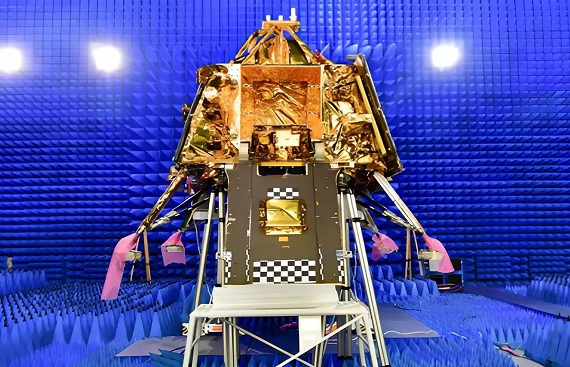Primary objective of Chandrayaan-3 will be precise landing: ISRO Chief
By
siliconindia | Thursday, 23 March 2023, 04:52:35 PM IST

The “primary objective” of the next Indian moon mission Chandrayaan-3, expected to launch later this year, “is going to be precise landing”, said Indian Space Research Organisation (ISRO) chairman and secretary of Department of Space (DoS), ISRO) chairman S Somanath.
Speaking at the three day Fourth Indian Planetary Science Conference (IPSC-2023) that began at the Physical Research Laboratory, the Isro chairman referred to Chandrayaan-2, India’s second space mission to moon, whose lander rover component malfunctioned in the final moments before the touchdown and crashlanded.
“Now we are working on Ch-3, the craft is almost ready, it is fully integrated possibly the launch can take place by the middle of this year. The primary objective of Ch-3 is going to be precise landing. For that, a lot of work is being done. The scientific objectives remain more or less the same as the earlier (mission of Ch-2). Let us hope that this time Ch-3 will do the right job,” he said.
The lander and rover component of the Ch-2 mission had malfunctioned in the final moments before the touchdown and crash landed, getting destroyed in the process. At the IPSC, organised by the Indian Planetary Science Association (IPSA), Somanath also participated in a talk on “Indian Accomplishments in Space Science and Planetary Exploration”.
While ISRO’s human spaceflight mission Gaganyaan is focused on achieving loftier goals, Somanath said, it does not have “good scientific objectives” at the moment, an area that needs to be worked upon. “(Gaganyaan) programme is going very well now, we are working on a lot of objectives. I have not seen any good scientific objectives coming out of this whole programme, I think this is something that we need to work on. There are a lot of possibilities today. which can be done robotically or with the presence of human being we need to work on this and come out with some good scientific goals through the Gaganyaan programme. Sending a man up there is one part but doing something very meaningful using him, is something we are all looking for,” said Somnath.
Detailing on the successes of the past two moon missions, Somanath noted that India’s progress in capabilities has gained interest in potential purchase by NASA’s Jet Propulsion Laboratory (JPL) a research and development lab federally funded by NASA and managed by Caltech.
Somanath said, “Ch-1 is an example of global cooperation, hosting instruments from other nations. In Ch-2, it was all Indian instruments on board. Today when we talk about Ch-3, there is nothing of the other nations that is being hosted when JPL team visited and reviewed Ch-3 mission, they were praising us for the type of instruments and capabilities designed and built into Ch-3 they said, ‘we are ready to buy some of them for our own missions’. Many of the instruments on board Ch-1, Ch-2 have produced excellent results most important one being the discovery of the so called presence of water on Moon”
Hinting at the stagnated status of the Venus mission (Shukrayaan-1), Somanath said, “We are in the process of defining a project for Venus we need to work on it further. Recently we conducted a science workshop on Venus and a lot of interest is there in the science community to make use of the capability in this mission and I’m very sure we will take it up further”.
